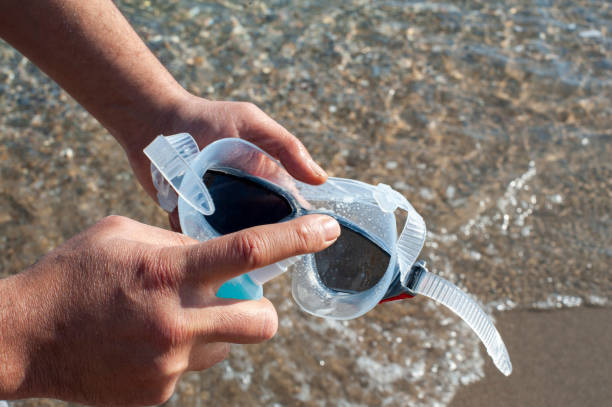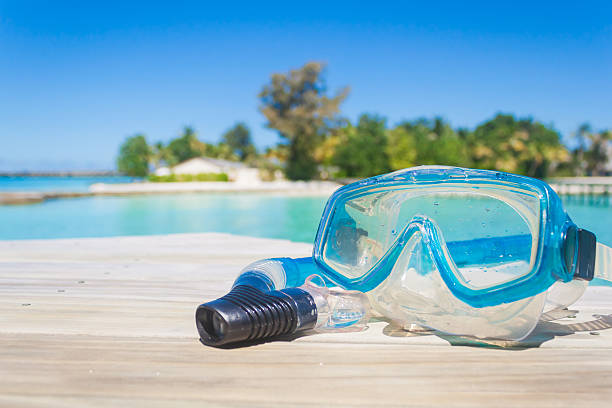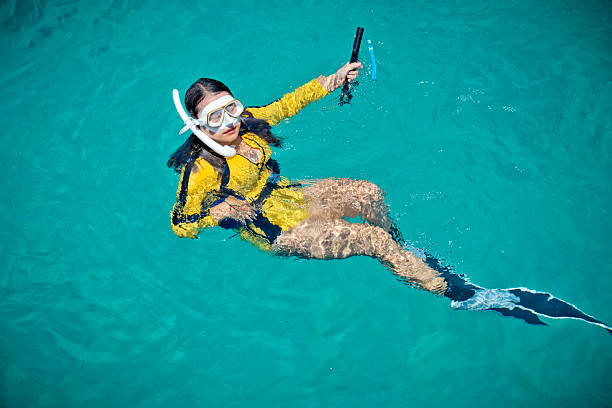Finding the perfect full face snorkel mask starts with understanding size and fit. This guide explains how to measure your face and tips to choose the right mask. Whether you are just starting or diving regularly, this guide helps ensure the best underwater experience.
How to Measure Your Face for Full Face Snorkel Masks
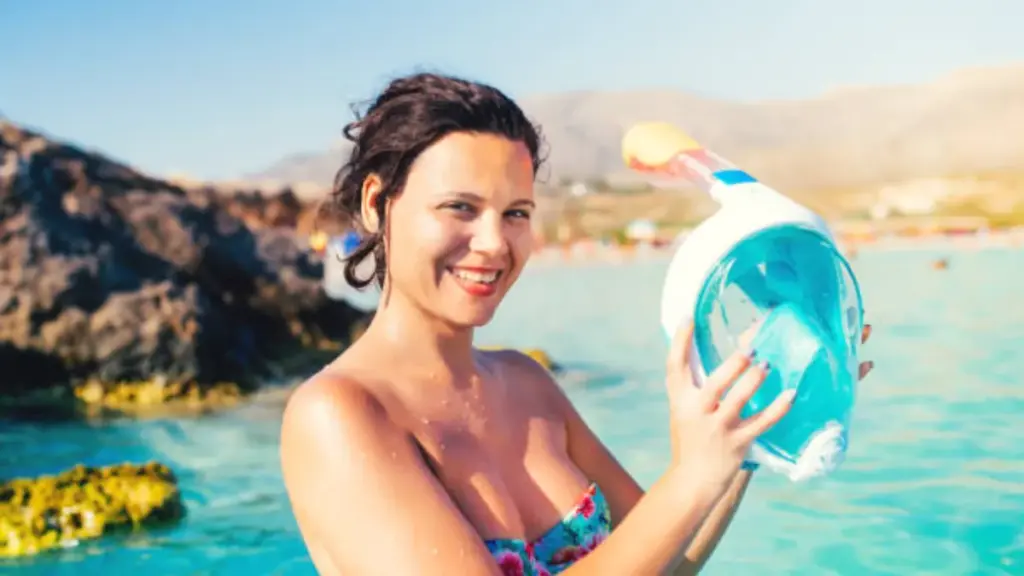
Before referring to any full face snorkel mask size chart, taking precise measurements of your face is essential. Here’s a step-by-step guide to get it right:
Step 1: Measure Your Face Length
Use a soft measuring tape. Start from the bridge of your nose (between your eyes) down to the tip of your chin. Record this in centimeters. A common range is 12–16 cm for adults. This measurement helps determine whether you need a small, medium, or large mask.
Step 2: Measure Your Face Width
Measure from the outer edge of one cheekbone to the other. This width determines how well the mask will seal around your face. A mask that’s too narrow will press painfully against the skin, while one that’s too wide may leak. For adults, this usually ranges from 11–15 cm.
Step 3: Measure Your Face Circumference (Optional)
Some advanced snorkel masks provide more than three sizes. Measuring the circumference from the forehead down to the jawline and around the back of your head can help identify the perfect fit in masks with adjustable straps.
Step 4: Consider Facial Features
Certain features affect mask selection:
High cheekbones: Masks with flexible skirts adapt better.
Wide nose bridges: Look for masks with softer silicone seals.
Facial hair: A tight seal is harder to achieve; some masks work better with minimal hair coverage.
Full Face Snorkel Mask Sizes
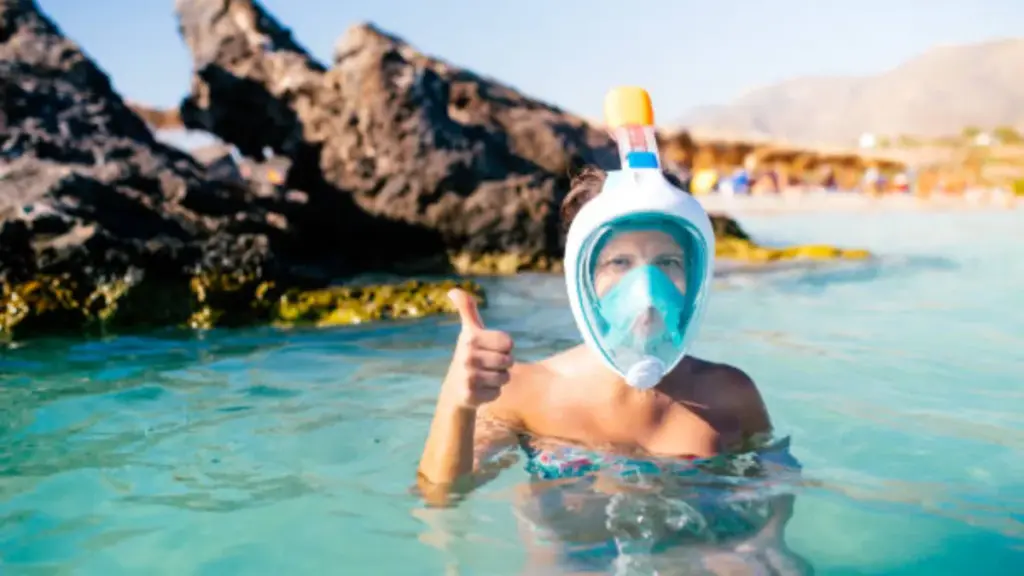
Mask sizing is not standardized across brands, so knowing general guidelines and interpreting manufacturer charts is essential.
Small Size Masks
Small masks fit narrower faces. Typically, these are recommended for:
Adults with face length under 13.5 cm.
Teenagers transitioning to adult snorkels.
Small masks have lower internal volume, which reduces dead air space. This design improves airflow and reduces CO₂ buildup, which is especially important for beginners who might breathe faster underwater.
Medium Size Masks
Medium masks are the most common. They generally fit:
Face lengths between 13.5–15 cm.
Average adult widths around 12–13.5 cm.
Medium masks offer a balanced design. They are flexible enough to accommodate slight variations in face shape while maintaining an effective seal. Many professional snorkel mask manufacturers report that 60–65% of their adult customers fall into this category.
Large Size Masks
Large masks are designed for wider or longer faces:
Face lengths above 15 cm.
Cheekbone width above 13.5 cm.
Large masks provide more breathing space and visibility. Advanced snorkelers often prefer larger masks because the increased internal volume reduces pressure around the nose and jaw during longer dives.
Extra Considerations: Junior or Kids Masks
Some brands produce sizes specifically for younger snorkelers. These masks have a smaller skirt and an adjusted internal volume to prevent leaks while ensuring comfort. Using adult masks for children can cause discomfort and unsafe leaks, even with adjustable straps.
Reference Size Charts
Because different brands use varying sizing standards, it’s important to check the specific size chart for the mask model you plan to buy. Below are reference charts for some of the most popular full face snorkeling mask models:
Brand | Tamaño | Face Length Range (Bridge of Nose to Chin) | Applicable Mask Models | Notes |
|---|---|---|---|---|
Ocean Reef | XS | ≤ 10 cm | Aria JR (Kids) | Only suitable for children’s mask models |
S/M | 10–11.5 cm | Aria QR+, Aria | Fits most adults; check brand website for specifics | |
M/L | 11.5–12.5 cm | Aria QR+ | Suitable for adults with longer faces | |
L/XL | 12.5–14 cm | Aria, Aria QR+ | Suitable for adults with wider or longer faces | |
Pulmón acuático | XS | 60–65 in (152–165 cm) | Reveal UltraFit (Snorkel Mask) | For users with height 152–165 cm |
S/M | 62–67 in (157–170 cm) | Reveal UltraFit | For users with height 157–170 cm | |
M/L | 67–70 in (170–178 cm) | Reveal UltraFit | For users with height 170–178 cm | |
L/XL | 70–72 in (178–183 cm) | Reveal UltraFit | For users with height 178–183 cm |
Full Face Snorkel Mask Size Tips for a Comfortable Fit
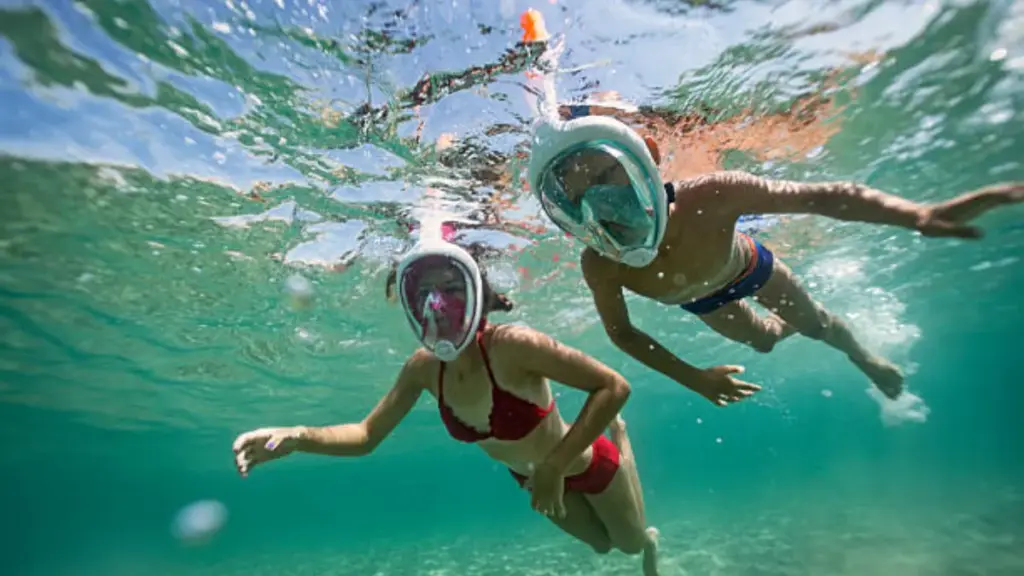
A proper fit ensures smooth breathing, prevents water from entering, and reduces jaw and forehead pressure. Even small differences in size can affect performance, so it’s important to understand how to measure and select the correct mask.
Measure Your Face Accurately
Start by measuring the distance from the bridge of your nose to the bottom of your chin, and from cheekbone to cheekbone. These two measurements are essential to match your face with mask models. Many leaks or discomforts occur because users rely only on generalized size labels like S, M, or L, without checking actual face dimensions.
Compare Measurements to Size Charts
Use the brand-specific size charts whenever possible. Each manufacturer defines sizes differently, so S/M in one brand might fit like M/L in another. Comparing your measurements to these charts helps ensure a snug seal and proper coverage, minimizing leaks and enhancing comfort.
Test the Seal Before Strapping
Once you select a potential mask, press it gently against your face without straps. A mask that stays in place for 10–15 seconds indicates a good initial fit. This simple test focuses on size rather than strap tension, giving you confidence that the mask will seal correctly once adjusted.
Consider Nose and Cheekbone Fit
Masks must accommodate variations in facial structure. Wide noses or prominent cheekbones may require larger skirts or different size categories. Proper alignment ensures the mask covers your face fully without gaps or excessive pressure points.
Adjust Straps to Maintain Fit
Straps help hold the mask in place, but cannot correct poor sizing. Tightening or loosening straps can improve comfort slightly, but the mask must already match your face size. Even minor misfits can cause leaks, fogging, or discomfort during extended use.
Recheck Fit in Shallow Water
Testing the mask in shallow water allows you to confirm the fit under realistic conditions. Look for minor leaks, seal gaps, or shifting. Masks that fit correctly according to size charts will perform well during this trial, while masks that are too small or too large will reveal issues immediately.
Monitor Fit Over Time
Silicone skirts and straps can stretch or compress with repeated use. Even a correctly sized mask may feel different after months of esnórquel. Periodically reassessing the fit ensures continued comfort and reliable performance.
Reflexiones finales
A properly sized full face snorkel mask ensures safety, comfort, and reliable performance underwater. Masks that fit well prevent leaks, allow smooth breathing, and improve overall user satisfaction. For businesses and distributors, sourcing high-quality masks reduces returns and strengthens customer trust.
Natación de vanguardia offers a range of full face snorkel masks designed for durability, comfort, and professional use. With our one-stop manufacturing approach, each mask is produced and tested under strict quality standards, giving your clients a product they can rely on.
Explore Vanguard’s collection today and provide your customers with masks that combine performance, safety, and lasting quality.
Preguntas frecuentes
Can I rely only on “S, M, L” size labels?
No. These labels vary between brands. A “Medium” in one model may fit like a “Large” in another. Always check the brand’s chart with your own measurements before buying.
What if my measurements are between two sizes?
If you’re between sizes, choose the larger size for a more comfortable fit. A mask that’s too small may press on your forehead or chin and cause leaks, while a slightly larger mask can be adjusted with straps.
Do kids’ masks follow the same size rules?
Yes, but children’s models have their own charts. For example, many kids’ full face masks (like Ocean Reef Aria JR) are designed for faces under 10 cm from nose bridge to chin. Always check the model-specific guide.
How often should I recheck my mask size?
Check at least once a year or whenever your face shape changes (weight change, growth, facial hair). Materials like silicone can also soften over time, so reassessing ensures ongoing comfort and safety.
